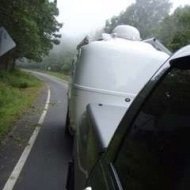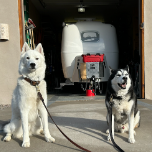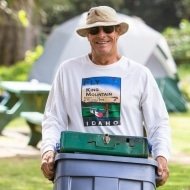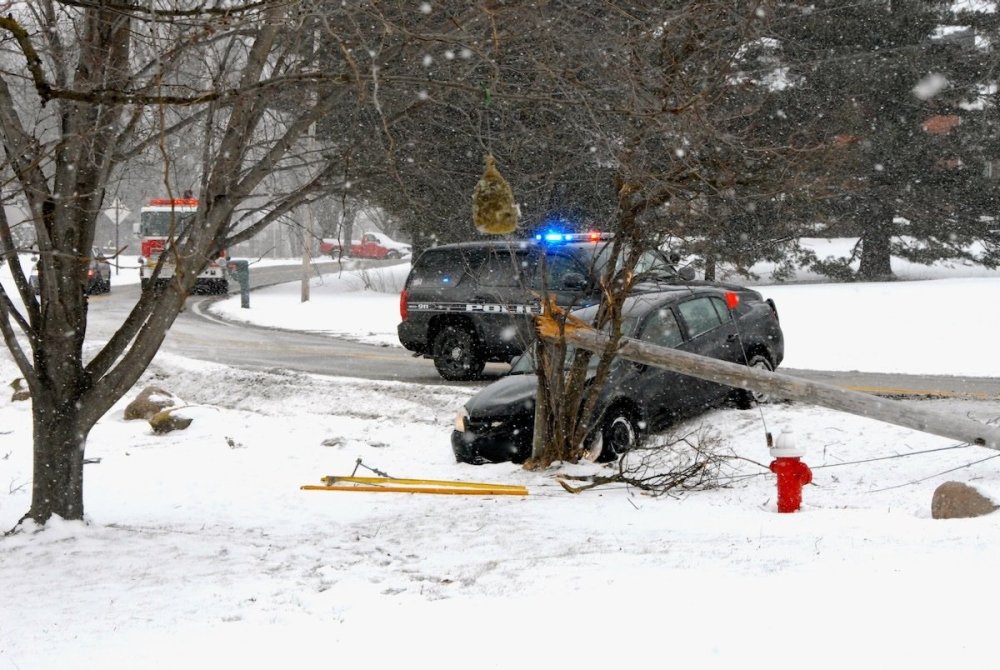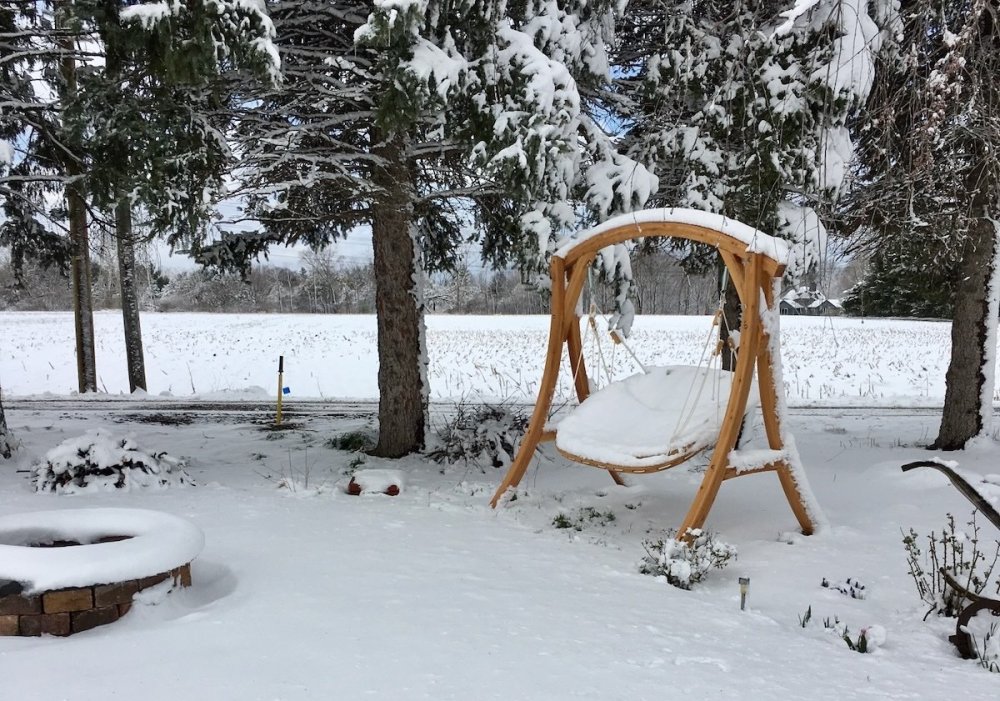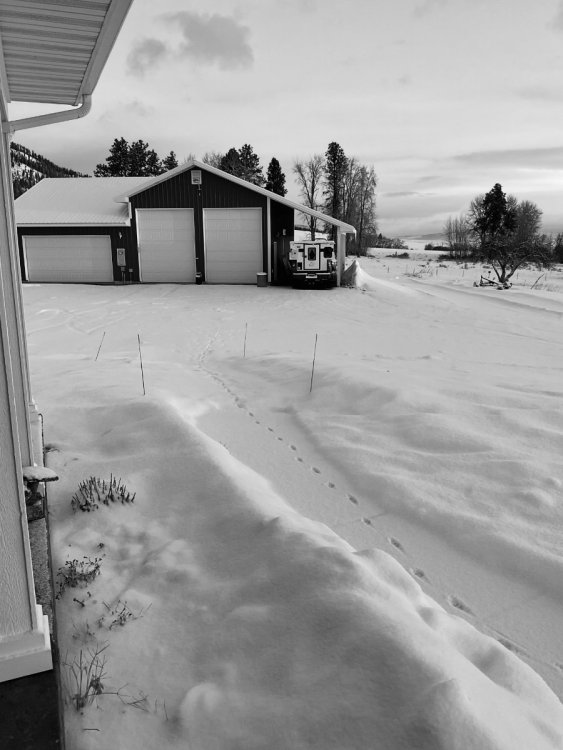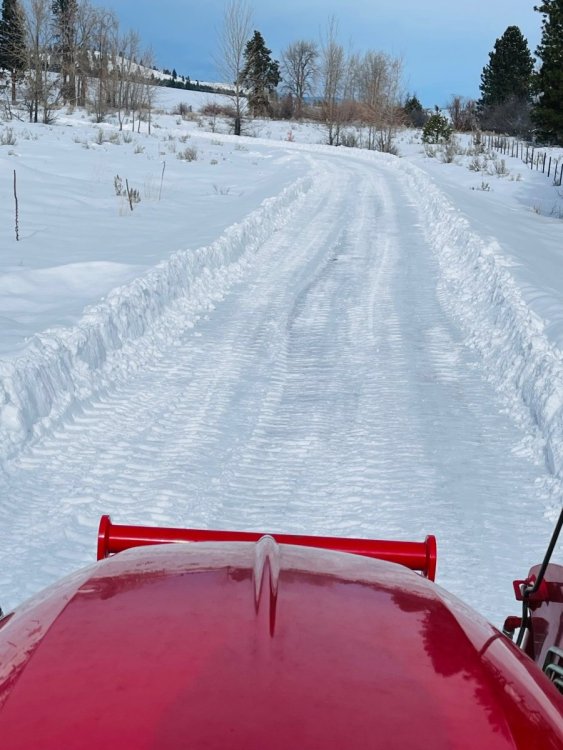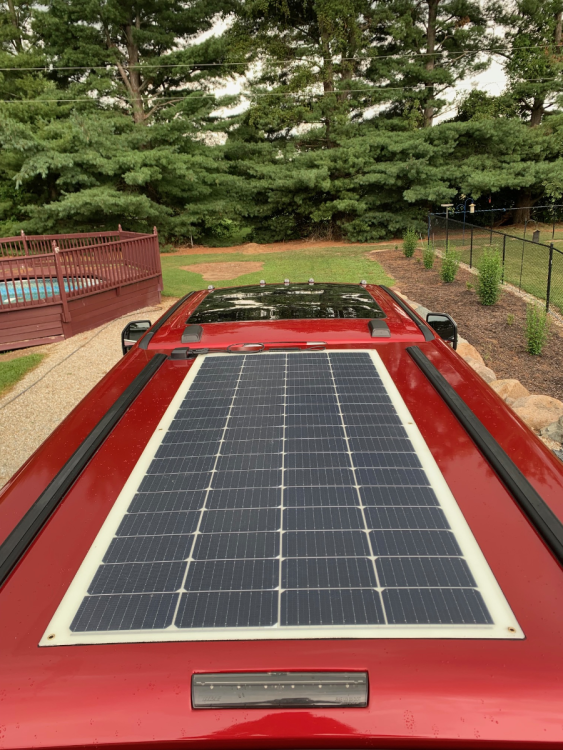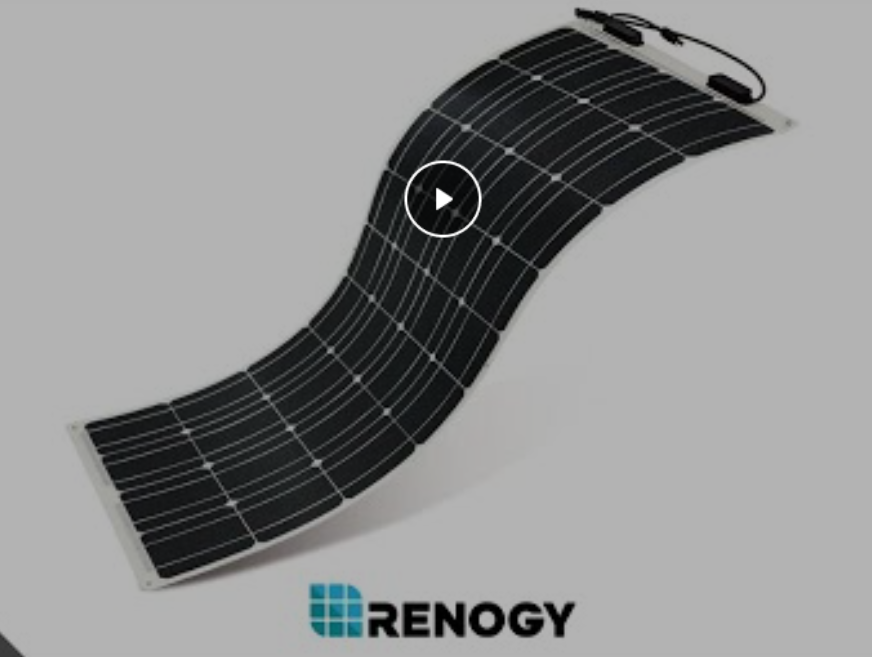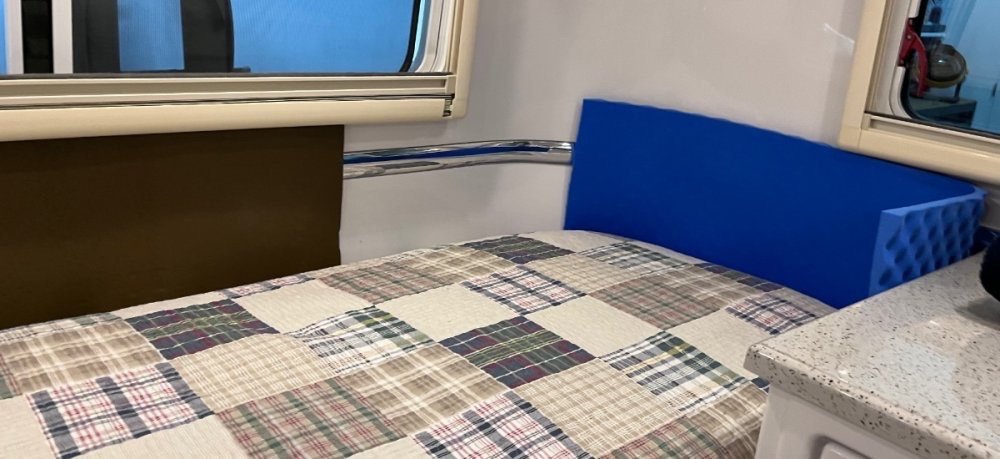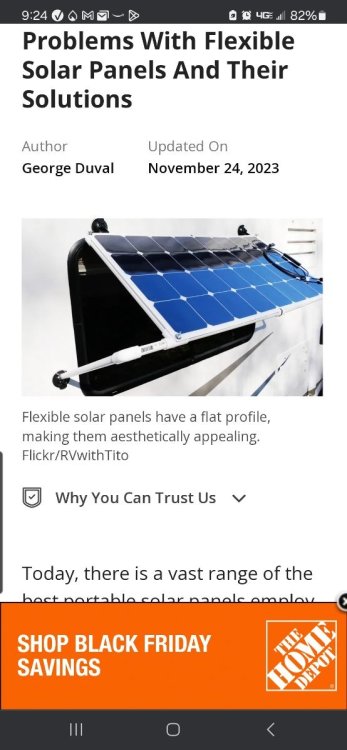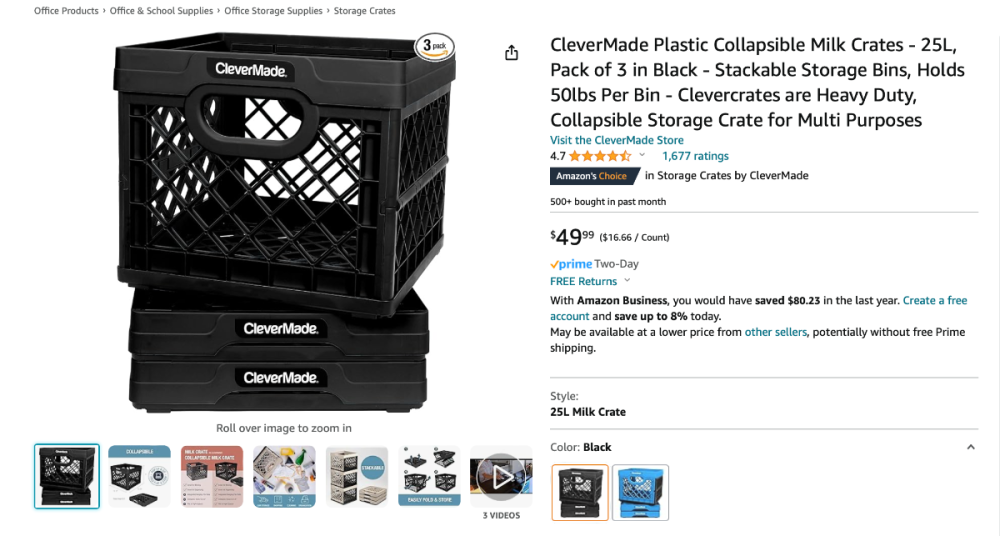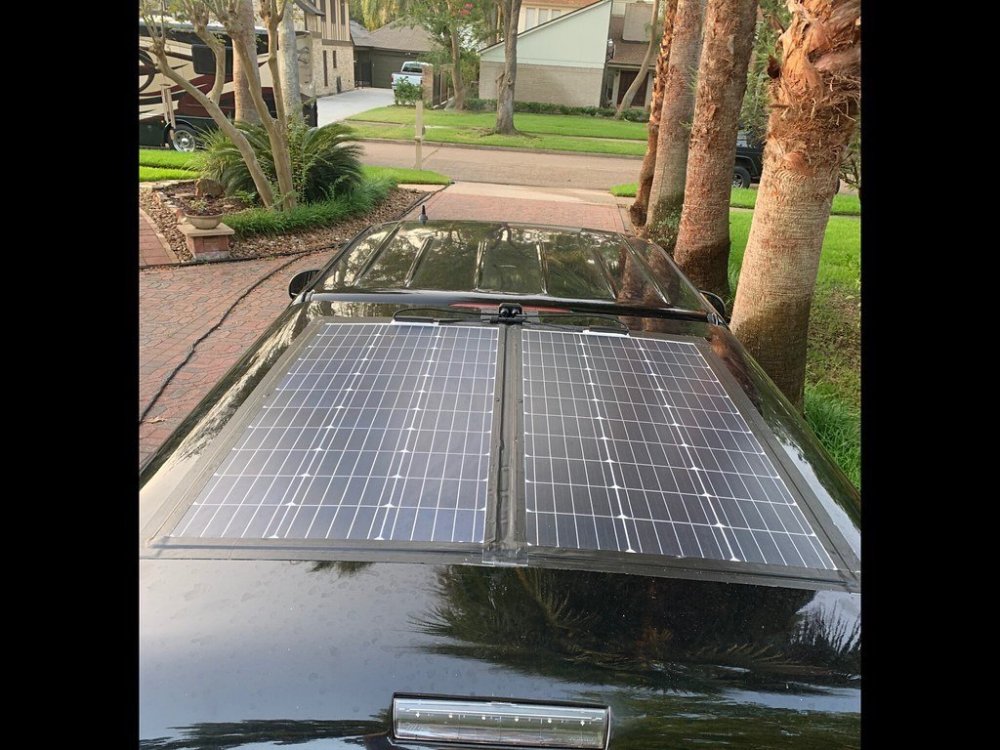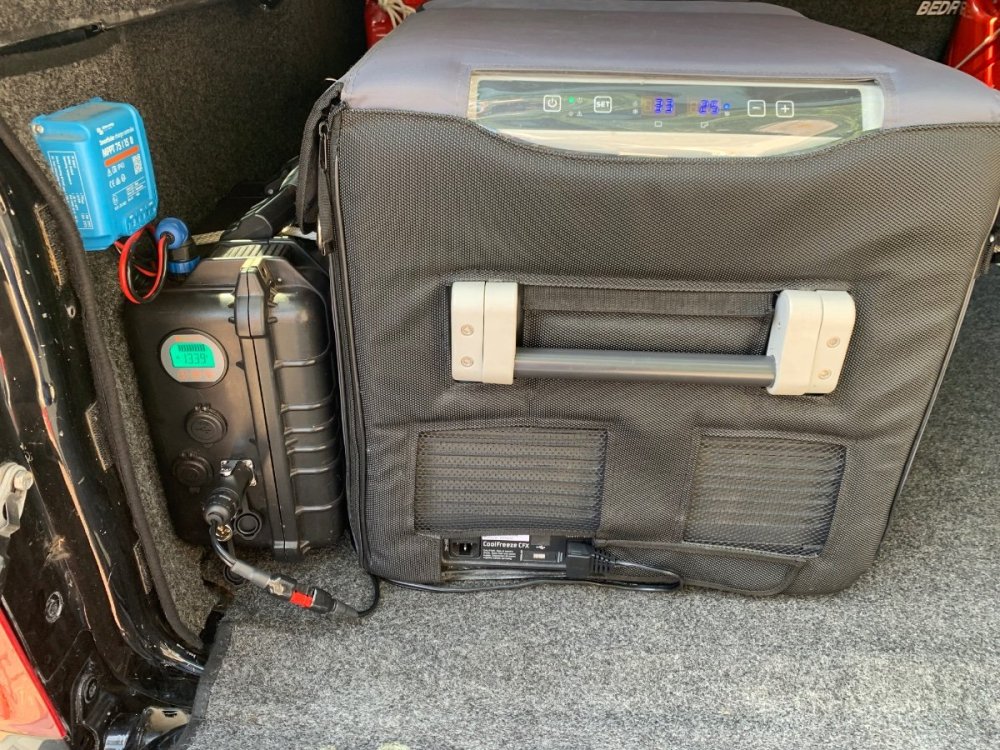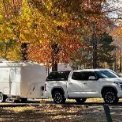Leaderboard
Popular Content
Showing content with the highest reputation on 11/30/2023 in all areas
-
While I have been very busy in the shop this holiday season and I took the time this week to update my catalog of Oliver upgrades. This version I have add four new products – A new version of my shower mat called The Slate, A curb & driver side Back Cabinet Shelf divider, The Hocken Footstool for those with composting toilets as well as, an Oak Knife Holder that drops into my Flatware organizer. Looking to add some warmth to you Oliver with wood countertops and other accessories or just want to be a little more organized? I have a world of possibilities for you. You can download the new 2024 Catalog here: https://drive.google.com/file/d/17XFL_5ine1WusHVKYguUBRmkj2KnJUN_/view?usp=sharing Onward, Foy Sperring6 points
-
You have a lot of (enviable) lifepo4 amp hours. The dc to dc charger makes sense, for you. You get extra benefit from the fossil fuels burned, with no added cost. For those of us who (now) tend to stay in one spot for a long time,with agm batteries, or smaller lifepo4 banks, solar makes more sense. Best investments are based on individual camping styles,and everyone is different.4 points
-
We mounted our 600 watts of flex panels to the sailboat hardtop with vhb tape. They still do the job, but don't look as good. I don't expect to get 20 years from them, but then, I never did. (I fully expect our fixed panels to outlive us, on the trailer, and the house.) We bought SunPower flex panels, etfe coating, for longevity and best productivity, and radius of curve, based on statistical research and sailing forums. Best quality cells, at the time. I believe renogy is now selling sunpower flex panels, newest gen. (We wanted a backup to engine driven alternator charging, as we lost the alternator in a race to Cuba almost 8 years ago. ) Our boat panels are ALWAYS in the hot Florida sun. They've done a great job so far. Haven't plugged in the boat in since installation. Dint have to run the engine to charge the batteries. Flexible panels were the only realistic option on the hardtop curves. We used vhb tape, not adhesive, in hopes of being able to remove when necessary, in the future. Fingers crossed. Those of you who store under cover will certainly see more longevity than we will, on the boat. I know several members here have used narrow flex panels to add to solar collection. I hope they'll chime in.4 points
-
Note the absence of snow. And the fact that you can't see the actors' breath. They are wearing what would pass for fall or spring gear in Idaho, with no hats. This is consistent with my earlier observation that the stock Oliver is a "4-season trailer" where it is made, in the Southern USA. It would also be useful in winter in many parts of Western Washington, Oregon or British Columbia (such as the coast, where it rarely snows). But, without significant modifications, it is not a true "4-season trailer" for use in Idaho, Montana, Northern Utah, the Northern Great Plains, New England, Canada East of the Rockies, etc.4 points
-
3 points
-
3 points
-
I'm impressed! I love diversity of power supply for sure. When I was installing our Lithiums and DC to DC and solar suit case I asked the forum if they could all play together at the same time. Got zero response back then. Looks like with your DC to DC Charger + Solar Panel on TV Bed Cover + Oliver Solar + Portable Panel = You seem to know how to do it. Would love to hear your thoughts and suggestions. Sorry in advance for hijackings my own thread! 🙂 GJ3 points
-
I like the idea of keeping the camper cool during hot weather while traveling to the next stop. With the DC-DC charging the bats from the truck, we can leave the inverter on and run the AC on low while driving and when we get to our destination, the camper is cool and the batteries will likely be 100%. No sense letting that alternator capacity go to waste.3 points
-
Not me. But, FWIW, I own two flexible solar panels which I have mounted on top of Pelican 1600 cases to recharge batteries I use to power my CPAP machine on wilderness river trips. One is almost 20 years old, the other just 1 year. The 20-year-old 11-watt panel cost me more than triple what I paid last year for the newer 20-watt panel!3 points
-
As an alternative to lack of solar input, the DC-DC charger gets it done!2 points
-
Just saw this and thought I would pass it along. Well done Oliver! 🇺🇸 Patriot🇺🇸2 points
-
I have a permanent search set up on RV Trader and just now I got a notice via email that my search has 4 new Oliver adds. Turns out they are all for the same dealership in Georgia and they are for 2024 LE2s that they are selling. Thoughts, comments. The pricing looks to be very much in line with factory pricing. Here's a screenshot of the email I got.2 points
-
I like seeing those high prices, keeps our resale value up!😜2 points
-
Sooo, different folks with different features can have different cold weather experiences. As outlined earlier in this chain, we spent months winter camping in our Elite 2, carefully tracking temps of pex lines in between shells, primarily with our unit winterized. 2021 with that era's furnace. While we stayed toasty warm down to negative teens, there were areas, primarily rearmost pex lines behind garage and lines feeding the exterior shower under the streetside bed, that would drop below freezing in temps around low twenties. After making outlined modes, which were extensive, the lines were good till mid teens. Had we been non winterized, running our Truma water heater, it would have made no difference as that system in the Olivers is a non circulating system so the Truma stays at temp where it is sety but the warm water does not make it to the taps unless they are open. To those that do not camp in freezing winter conditions, this is perfectly acceptable but if you camp where it can often drop below freezing you are likely to run into nightime temps that would expose lines to freezing. Especially true if daytime tempos stay below freezing. In single digit conditions, we would burn through a 30lb propane tank every other day which is both pricey and labor intensive. We loved our Oliver for the superior build quality, great ride, and comfy layout but so much of our camping was in full on winter conditions so we decided to move on. It sold, just yesterday and we have bought ourselves a Winnabego Ekko RV which is truly a 4 season unit. It was quite manageable camping in a winterized Oliver, using containerized water and our composting toilet (great) but our eyes are set on multi week ski safaris so the occasional shower is really a necessity. I've noticed that over the last couple of years Oliver has upgraded to a Truma heater and made some of the mods outlined here so I would assume the stock units can survive unwinterized to the lower temps I laid out above. Anyhow, that's my $02 worth.2 points
-
Autumn is my favorite season, but winter is a close second. Last year was probably the mildest winter in my memory, with maybe a Sean total of less than a foot of snow. But sometimes, we can have that much in just a few hours with lake-effect snow off of Lake Erie. Not like Buffalo, but enough to occasionally close everything. Winter isn't always fun, though. We live on a curve on a semi-rural road. Speed limit is 35, but that's just a suggestion. At the end of our property is a wind tunnel between trees, resulting in bad road conditions right at the curve. The magnolia tree actually came back better than ever. The electric pole didn't. Our girl would make bets on who came the closest to guessing how many vehicles we'd have in our yard each winter. This guy did *not* enjoy winter that particular day. MOV_8019.mov This was me arriving home from work several years ago. 😉 (Note that the tire tracks only come *from* the garage, not the road) On a prettier day Time for a nice warm fire? 😀2 points
-
That meerschaum pipe looks like the one Ulysses S. Grant used for years. No surprise he died of throat cancer....2 points
-
2 points
-
2 points
-
My first job out of college was in St Charles, MO. It gets single digits cold there, be prepared.2 points
-
a pipe? somehow he doesn't look like a pipe smoker.2 points
-
When I read that you want to camp in spring and fall in Colorado, I recalled the post below . LoriL posted some great pictures of camping high up in the mountains in October of last year.2 points
-
The Elite II trailers now being made, which include the Truma Varioheat furnace system, can be used in temps down close to single digits F without modification. The thread below includes my report using the stock trailer down to an ambient outside temp of 11 degrees F last year. With the furnace set at 70 degrees F, temps in the lower, more exposed parts of the trailer did not get below 38 degrees F, so I did not worry about plumbing freezing. The thread also contains lots of ideas for mods to expand the cold-weather capability of an Oliver trailer. With the right mods, it appears the Oliver can be used (with the plumbing not winterized) in temps down to the single digits F, so long as the furnace is kept running.2 points
-
It looks like late fall camping in the Carolinas to me, as well. We all did fine over Thanksgiving, some days highs in the 40s. Lows in 20s. But, hats and gloves were ordinary wear. Especially on windy days. Maybe they'll shoot another commercial in actual snow. We've managed that, in an early Ollie, with non ducted furnace and no power, other than (then) 200 watts solar. We opened a hatch or two, the bath door, and cupboard slides. (We don't have reflectix, in a 2008.) Our lowest camping temps have been in high teens and low twenties. I'm definitely not a winter camper, by choice. But it does happen that we get caught by surprise, sometimes. We like to be in Florida from December till April. We winterize anytime we leave the camper in storage, in WNC, after mid-september. We broke/froze the outside shower valves one time when we left it without winterizing, and didn't get back til after a couple hard freezes. Our bad. For folks with a Florida zip code, we're surprisingly good with winterizing....2 points
-
Sorry, just seeing this a month later... I would use 3M VHB 4950 tape. You must clean ALL old adhesive, down to bare metal or plastic, clean with alcohol on both surfaces. I get so many products with two-sided tape included and if the mount is important, I throw it out and use the 3M product.2 points
-
Concur 100% w/ @Rivernerd, but hey, I'm really liking their dog!2 points
-
I think that is a fair clarification. Without an industry standard definition of four-season, we will always wonder how far north we can go. I will never have a problem in Texas, but I might run into some issues in Thief River Falls in January without taking some precautions. I plan on camping in Missouri after I pick up my Oliver in late December and I have no fear that it can handle that weather.2 points
-
You are correct about the technology. I was thinking back to my truck camper days, where there was a flexible panel that got fried. There was a lot said about air flow. If the mfg. is calling for adhering to the roof surface then they would have tested. I stand corrected🙃2 points
-
That's interesting because Renogy recommends mounting with silicone adhesive directly to the roof of the boat/RV. And they recommend this to eliminate the need to drill holes in the structure. They also say they are designed to operate normally up to 176 deg. and carry a five year warranty under these recommendations. I'm not saying they're impervious to heat damage, but according to this company, there flexible panels were designed for exactly this type of application. I purchased the 200w 12v Renogy Flex panel for my charging needs for a lithium battery pack in the truck that runs my portable fridge/freezer. I'm quite pleased with the installation and function so fare. My biggest worry was whether the panel would come loose with thermal expansion and contraction. Time will tell on this front but since the camper shell is fiberglass resin construction and the Renogy panel is as well, the rate of expansion and contraction should be similar. And the silicone adhesive remains flexible when set up so it does allow a margin of flex. We'll see. I only used a 3/8" bead around the perimeter. Once rolled flat it probably spread around and inch wide squeezing out to for a nice bead around the perimeter. I think flexible panel technology has come a long way like so many other types of technology. I may be a test case for direct mounting but at least I have a 5 year warranty backing up the experiment. Here's to trusting the manufacturer's recommendations. 🍻😉2 points
-
GJ, They sure look like the same item. I got mine at Costco. Periodically they go on special for $7. David2 points
-
When we purchased our OE2 in 2018, we passed on the solar kit due to cost and my obsession with not messing with the aerodynamics of the super smooth OE2. As expected the costs of solar panels are more reasonable now, but the commercialization of flat thin flexible panels has taken awhile. I don't know if these panels will flex enough for full roof coverage, but a combination of the slim and rectangular thin panels may suffice for great aerodynamics. Should that be the case, with thin connections it may be the ticket. Anybody tried this out yet? GJ1 point
-
In a recent video on YouTube, RV Miles mentions a relatively new film on the history of Airstream Trailers. Below is the link to this film which can be watched for $4.99 or purchased for $14.99. Bill https://vimeo.com/ondemand/alumination1 point
-
You bet Chris! I also hope this works out for Oliver. 👍🏻1 point
-
Here scroll down - https://www.rvuniverse.com/listings?keywords=Oliver travel trailer Patriot🇺🇸1 point
-
I see you have a good stock of cigars, as well! I’m an infrequent smoker, cigar with whisky, pipe when camping. Gave up the whisky a long time ago, but now reminded of something missing in camp! Nice looking pipe!1 point
-
1 point
-
Bought similar at Northern Tool, brand name Big Ant, available in two sizes. I use two of the smaller in the further reaches of the basement; one for water-, other electric-related stuff. The first ‘in’ has a rope tied to it for easy retrieval, the second used to push the first all of the way back. Perfect fitment to maximize that available, but hard to reach space. Just know, I had no inclination to opt for the interior basement hatch door at the twin model nightstand, the Lagun table was the preferred option. Since these crates ‘nest’, I stack two under cap in the TV bed for miscellaneous, as well as two in the cab behind the center console for easy to reach items and snacks. As for the larger size, I find them very handy in transporting food and clothing to and from the OTT, with no intentions to take with.1 point
-
1 point
-
1 point
-
Four six volt batteries would be wired as two sets of two batteries, each wired in series to create two twelve volt sets, but the amperage would stay the same as one battery. Those two sets would then be wired in parallel to keep the voltage at twelve volts. At that point, the amperage would double to that of twice the amperage of one of the batteries. Take a picture of the wiring, take each battery and deal with it separately and follow the advice that @Rivernerd outlined above.1 point
-
1 point
-
I added 200W of flexible solar panels atop the TV bed cap for the same purpose. Been great for 3.5 years! Since I did not opt for solar in my build, I’m now geared up to install a solar port at the propane tank housing to enable use of said panels to charge the OTT’s house batteries, as boondocking has become more frequent for me. Also adding a solar port outside at the rear basement hatch, inline with the other two ports for sat/cable TV. I plan to get a portable folding solar panel to further increase solar input.1 point
-
Now there’s an idea! Would be great in getting my ‘late sleeper’ wife up to make this ‘early riser’ his morning coffee.1 point
-
One of our own has a WeBoost mast mounted on suction cup kayak rollers on the back of his Oliver. You can see Steve's description about 16+ minutes into this video:1 point
-
I too found it necessary to hook up the signal booster to my Tiretraker to prevent "lost signal "alarms. I attached a 12 volt male cigarette lighter plug to the signal booster and when I tow, I plug it into a receptacle in the rear of my vehicle and secure it to the side with a piece of velcro tape. It is easy to remove and store when not towing. This approach should work in any of the cigarette lighter ports in the Oliver as well and only takes a few minutes to set up. No trailer wiring involved.1 point
-
@MAX Burner, humor aside, pouch cells are not a good choice, imo, for travel trailers, as @NCeagle said. I really don't know their current case or cell structure, but, I always tend to avoid the "least expensive" alternatives, unless I can truly drill down on the configuration. We invested a bunch in the best travel trailer, imo. I'm going to keep that right. I will always be on the lookout for a great price on a proven product. I think everyone here knows I'm a careful shopper. But ,as our daughter's boyfriend once said, he knows we'll "spend up" for the quality. It won't be pouch cells, if we ever decide to go with lithium. It will likely be battleborn. Like you, I don't want to look back in the mirror, and see my travel home looking like a burnt campfire marshmallow. Pouch cells are fine, for many uses. Imo, I don't want them in my trailer.1 point
-
No and there is reasonably little "R" value in layers of Reflectix. But, where insulation is already thin or where it adds another layer of "dead" air space then - why not. Bill1 point
-
No problems with bugs at these temps. Last year, during the early October bow season, my two sons hunted and tent camped the same area. Again, no bugs but when they returned to their tent following a day of hunting, the tent had been torn down by a bear. Needles to say, their hunt was cut short as they quickly packed up and skedaddled back to their truck. They were much more comfortable this year, camping with me in our new Oliver...my days of tent camping, during any season, are over now that we have the Oliver!1 point
-
Now I'll correct myself after reviewing the manual. The Xantrex can indeed function like a UPS, switching back and forth between shore power and battery automatically. Pretty nifty trick. (Note that setting 11 should be on APL if you're running the A/C.) The only downside I can see now would be forgetting to turn it off when not connected to shore power and draining your batteries by accident (or having the shore power fail without you knowing it, with the same result). Interesting.1 point
-
That is true but the charger/converter section of the Xantrex will still charge the batteries and pass 120v AC to the outlets when the inverter is turned off at the control panel and you're connected to shore power. We usually only power up the inverter section when we need to run 120v appliances off the batteries. I had never considered leaving the inverter section on while connected to shore power. I can see that could be useful if you have some sort of critical 120v equipment that you would want to ensure constant power to. OTOH, running the inverter when you do have shore power adds inefficiency and heat. You're basically taking 120v AC, converting it to 12v DC to charge the batteries, then inverting it back to 120v AC to feed the outlets. In special circumstances I can see value in that. Maybe you're running the air conditioner for a pet while you're gone and don't want it to stop if the shoreline power failed. Leaving the inverter on would be an elegant solution (provided you return before the batteries are exhausted). The downside, however, is increased runtime for your inverter - which might lead to its failure earlier than if you only ran it while boondocking. Just another way of looking at it.1 point
-
Neat! do you have a link for the flexible insulation material you used in the outside access doors? You might want to think about sealing off the big screened vent holes in your battery door. Wouldn’t it be NICE if Oliver would build these trailers with molded in place fiberglass air ducts going through all those locations? Thanks, John Davies Spokane WA1 point
-
Recent Achievements

